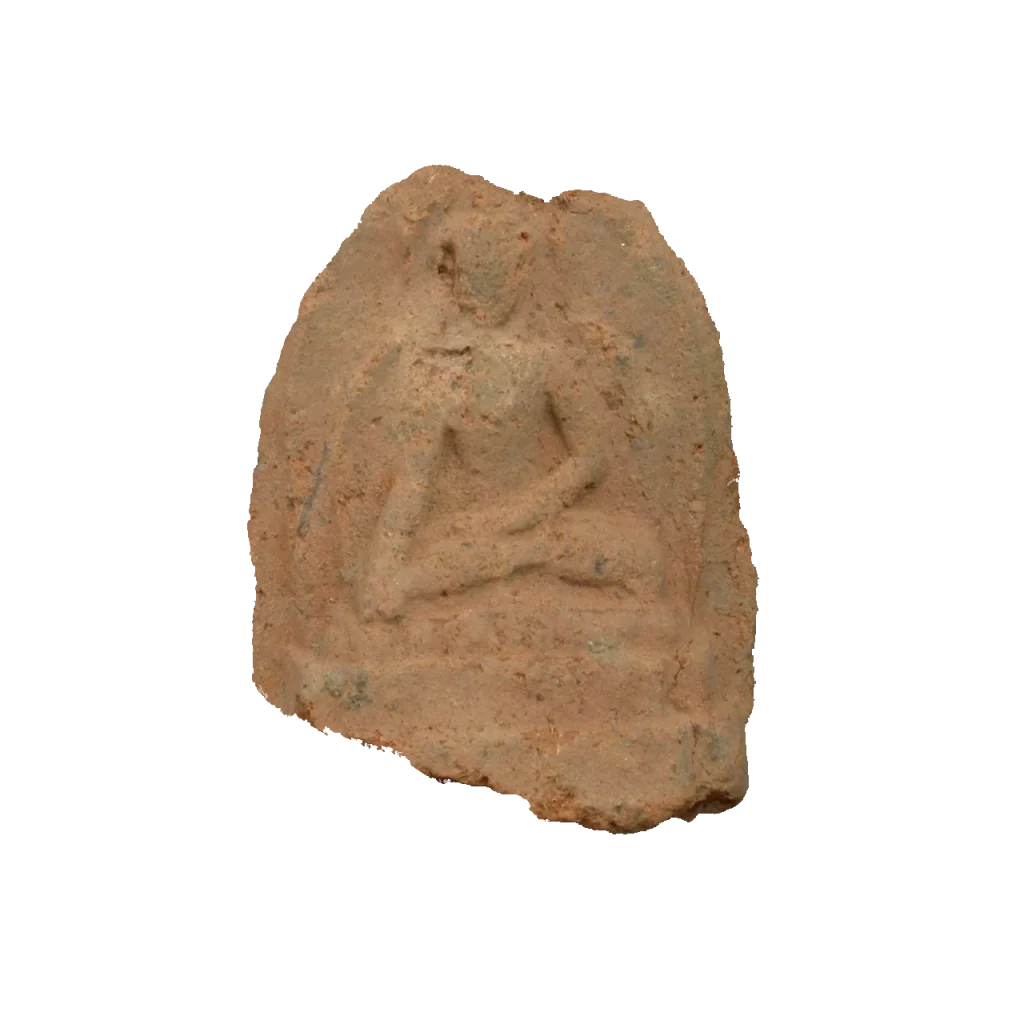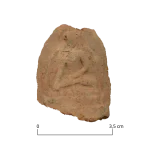
Tsatsa with Depiction of Buddha Shakyamuni
Location Karakorum
Dating 13th-14th cent.
Epoch Mongolian empire
Material Clay
Technique Plastic Art
Description
Tsatsas are offerings that are common in the Buddhist environment and can still be found today. They are made of clay, and the ashes of Buddhist teachers or saints are often added to them. They can have different shapes. They often depict the Buddha or other venerable role models. Another common form is the depiction of various stupas. Their creation with the help of forms is a ritual or an action meditation, during which mantras are usually recited. This is intended to help in the attainment of Buddhahood. After being made, tsatsas are placed in special places, such as stupas or sacred places in nature.
This object, along with around 100,000 other tsatsas, was placed in the foundation of the central stupa of the Great Hall as a building offering. On this specimen, the Buddha is depicted meditating on a lotus throne. His right hand touches the earth, this gesture symbolizes the moment in which the meditating Buddha invokes the earth as a witness to his determination to resist temptations and demons and finally attain enlightenment.
3D Visualisation
3D Model: H. Rohland
Images: P. Börner / HTWD
Literature
Hüttel, H.-G. (2005) ‘Tsha-tshas’, in Dschingis Khan und seine Erben: Das Weltreich der Mongolen. München: Hirmer, p. 165. [Genghis Khan and his Heirs: The World Empire of the Mongols]

